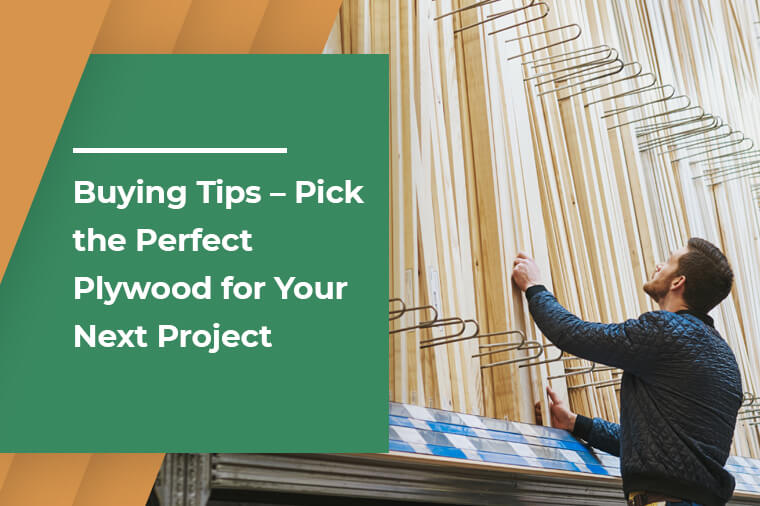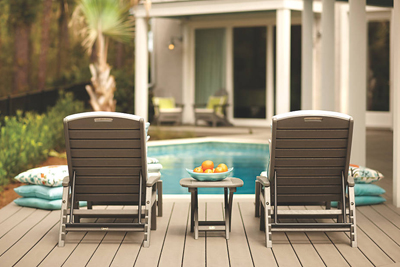Buying Tips - Pick the Perfect Plywood for Your Next Project

To All Our Valued Customers, Over the past few years, the Covid 19 Pandemic has forced us to adapt and change the way we do things on a day-to-day basis. Florida Lumber is no exception. To make sure that we remain strong and competitive in the market for the years to come, Florida Lumber has had to adjust and change our vision for the future. In the last 2 years, we have stopped selling Sheetrock and drywall products, roofing felt and roofing materials, and have even closed on Saturdays.
Over the last few months, we have been transitioning our way out of the door supply business so on August 31, 2022, our door shop will stop assembling doors. We will continue liquidating our doors from inventory until we are out of material.
Some customers have asked if we are closing or even moving locations. To set the story straight, we are not closing or selling the business and we are not moving. These changes are all part of our new vision and path to continue serving South Florida and increasing our footprint in the construction supply industry.
Our focus is going to be on Lumber, Construction Materials, Rebar Fabrication and Rebar Accessories. As we have liquidated some of the items that we don’t sell anymore we have created more space to buy a larger volume of our core items and pass on the savings to our customers.
In the next year you will start seeing changes that will help improve our ability to serve you, our customers. We appreciate your business and your patience as Florida Lumber’s new vision becomes reality.
A Todos Nuestros Valiosos Clientes En los ultimos anos, la pandemia de el Virus (Covid 19) nos ha forzado a adaptarnos y cambiar la forma de hacer cosas en el dia a dia. Florida Lumber no ha sido una excepcion.
Para asegurarnos de mantenernos fuertes y competitivos en el mercado en los anos venideros, Florida Lumber ha tenido que ajustar y cambiar nuestra vision para el futuro. En los dos ultimos anos hemos dejado de vender los productos de yeso (sheetrock), paneles de yeso (drywall), tela asfaltica (roofing felt), materiales de techo y cerramos los Sabados. En los ultimos meses, hemos estado en transicion para salir del negocio de suministro de puertas, en Agosto 31, del 2022 nuestra tienda de puertas dejara de construir y/o cortar puertas. Vamos a continuar liquidando nuestro inventario de puertas haste que terminemos todo el material. Algunos de nuestros clientes han preguntado si estamos cerrando o si nos estamos moviendo a otra localidad. La verdad es que no estamos cerrando, no estamos vendiendo y no estamos cambiando de localidad. Estos cambios son todos parte de nuestra nueva vision y camino a continuar sirviendo al estado sur de la Florida y incrementar nuestras huellas en la industria de suministros de construccion.
paneles de yeso (drywall), tela asfaltica (roofing felt), materiales de techo y cerramos los Sabados.
En los ultimos meses, hemos estado en transicion para salir del negocio de suministro de puertas, en Agosto 31, del 2022 nuestra tienda de puertas dejara de construir y/o cortar puertas.
Vamos a continuar liquidando nuestro inventario de puertas haste que terminemos todo el material. Algunos de nuestros clientes han preguntado si estamos cerrando o si nos estamos moviendo a otra localidad.
La verdad es que no estamos cerrando, no estamos vendiendo y no estamos cambiando de localidad. Estos cambios son todos parte de nuestra nueva vision y camino a continuar sirviendo al estado sur de la Florida y incrementar nuestras huellas en la industria de suministros de construcción.
2431 N.W. 20TH ST.
MIAMI, FL 33142
PHONE: (305) 635-6412
Sales Fax: (305) 633-4054
Accounting Fax: (305) 635-3723
Email: sales@tloridalumber.com

A plywood sheet includes multiple layers/plies of wood. These layers are glued together at measured angles to increase the plywood’s strength and durability. However, not every sheet of plywood is built with equal craftsmanship. The quality varies from one sheet to another. Hence, it is prudent to remember the following plywood buying tips before making any purchase.
Edge & Core Inspection
You may start the evaluation process by looking at the edge of a plywood sheet. The thin wooden veneers are pressed together in cross-grain directions. This scientific manufacturing process brings to you a flatter, wider and dimensionally durable sheets of plywood. The core of a premium-quality sheet is made of birch wood. These days, many manufacturers use inferior quality wood to build the core. It reduces the core strength and durability. The first-class sheet of plywood has straight layers of consistent thickness with no void in the sheet. You may check a sheet’s edge to determine the straightness. A bowed sheet of plywood indicates an uneven drying of the core material, which may warp in the future.
Number of Plies
The durability of a plywood sheet doesn’t solely depend on the number of layers. On the surface, you might think that 13 layers of wood veneers are more durable than seven layers of veneers. The thickness of the face veneer matters the most. A face veneer of 1/50-inch thickness is extremely thin. It is hard to avoid the sand-through or crosscut splintering mistakes when using ultra-thin face veneers. You may even use the latest combination-core plywood that contains MDF (medium-density fiberboard) material on the outer layers. This material can prevent inconsistencies in the thickness/flatness of the plywood veneers.
Face Value
Aesthetics of the face veneer are as important as the strength of the core plies. It is another important feature to consider when you buy plywood. The manufacturers of plywood use the standards of the HPVA (Hardwood Plywood and Veneer Association) to grade the face veneers. The front face may receive AA/A/B/C/D/E grades depending upon the consistency of grain and colors. The back face may receive 1/2/3/4 grades based on the defects and/or repairs.
Slicing Pattern
Hardwood plywood features rift-sawn, plain-sliced and quarter cuts. However, the face-veneer may feature two different slicing patterns – rotary and non-rotary cuts. In rotary slicing, the veneer is stripped from the spinning logs. This type of peeling process creates wide grain patterns. When using the non-rotary cut face veneers, you may check the gluing pattern of the face veneer with the core sheets of the plywood. A non-rotary sliced face veneer gives you the opportunity to match a veneer according to the projects’ demands.
Core Strength Trumps Appearance
It is prudent to closely inspect the strength of core veneers before making any purchase. The C3-graded red-oak plywood looks elegant with a rotary-sliced face veneer. However, you may find wide voids, distinctive waves or unevenness in the core veneers upon close inspection. Hence, it is prudent to check the quality of core veneers alongside the looks of face veneers.
True Worth
The A1-grade plywood may be expensive than the C3-grade plywood. However, the A1-grade products have uniform core veneers alongside the slip-matched and plain-sawn face veneers. Hence, it is worthwhile to invest in A1-grade products despite the higher expense.
Furniture Friendliness
The MDF material increases the flatness of the plywood’s surface and the dimensional consistency. The presence of these qualities makes furniture-friendly sheets of plywood. The sheets of combination-core plywood have excellent rigidity and the ability to hold the screws.
Conclusion
The AA grade sheets of hardwood plywood are showing excellent durability; however, they are also expensive. These sheets are suitable for high-end products. The A1/A2/B1/B2 grade sheets of plywood are ideal for the manufacturing of elegant furnishing items. Most of the dealers keep G2S/A1 grade, G1S/A4 grade or B2 grade plywood in stock for use with furnishing items. It is our hope that the preceding plywood buying tips will help you make an educated buying decision.

